Mechanical, Electrical, and Biological Properties of Mechanochemically Processed Hydroxyapatite Ceramics
Abstract
1. Introduction
2. Materials and Methods
3. Results and Discussion
3.1. XRD and FTIR Study
3.2. Density and Microstructure Study
3.3. Mechanical Properties Study
3.4. Dielectric Study
3.5. Hemocompatibility, Cytocompatibility, and Cell Proliferative Effects
4. Conclusions
Author Contributions
Funding
Institutional Review Board Statement
Informed Consent Statement
Data Availability Statement
Acknowledgments
Conflicts of Interest
References
- Szcześ, A.; Hołysz, L.; Chibowski, E. Synthesis of hydroxyapatite for biomedical applications. Adv. Colloid Interface Sci. 2017, 249, 321–330. [Google Scholar] [CrossRef]
- Qing, F.; Wang, Z.; Hong, Y.; Liu, M.; Guo, B.; Luo, H.; Zhang, X. Selective effects of hydroxyapatite nanoparticles on osteosarcoma cells and osteoblasts. J. Mater. Sci. Mater. Med. 2012, 23, 2245–2251. [Google Scholar] [CrossRef] [PubMed]
- Paduraru, A.V.; Musuc, A.M.; Oprea, O.C.; Trusca, R.; Iordache, F.; Vasile, B.S.; Andronescu, E. Synthesis and Characterization of Photoluminescent Ce(III) and Ce(IV) Substituted Hydroxyapatite Nanomaterials by Co-Precipitation Method: Cytotoxicity and Biocompatibility Evaluation. Nanomaterials 2021, 11, 1911. [Google Scholar] [CrossRef] [PubMed]
- Ramesh, S.; Aw, K.L.; Tolouei, R.; Amiriyan, M.; Tan, C.Y.; Hamdi, M.; Purbolaksono, J.; Hassan, M.A.; Teng, W.D. Sintering properties of hydroxyapatite powders prepared using different methods. Ceram. Int. 2013, 39, 111–119. [Google Scholar] [CrossRef]
- Yeong, K.C.B.; Wang, J.; Ng, S.C. Mechanochemical synthesis of nanocrystalline hydroxyapatite from CaO and CaHPO4. Biomaterials 2001, 22, 2705–2712. [Google Scholar] [CrossRef]
- Dasgupta, S.; Tarafder, S.; Bandyopadhyay, A.; Bose, S. Effect of grain size on mechanical, surface and biological properties of microwave sintered hydroxyapatite. Mater. Sci. Eng. C 2013, 33, 2846–2854. [Google Scholar] [CrossRef]
- Anitha1, H.M.P. Comprehensive Review of Preparation Methodologies of Nano Hydroxyapatite. J. Environ. Nanotechnol. 2014, 3, 101–121. [Google Scholar] [CrossRef]
- Sharifah, A.; Iis, S.; Mohd, H.; Singh, R. Mechanochemical synthesis of nanosized hydroxyapatite powder and its conversion to dense bodies. Mater. Sci. Forum 2011, 694, 118–122. [Google Scholar] [CrossRef]
- Swain, S.; Muneer, A.S.; Sahu, R.; Mahapatra, A.; Negi, R.R.; Samanta, B.; Nanda, D.; Kumar, P.; Dasgupta, S. Sonia Structural, Mechanical and Dielectric Properties of Microwave-Assisted High-Energy Ball Milling Synthesis of Hydroxyapatite. Integr. Ferroelectr. 2020, 205, 186–193. [Google Scholar] [CrossRef]
- Gold, L.W. Deformation Mechanisms in Ice; National Research Council of Canada: Ottawa, ON, Canada, 1963.
- Thangamani, N.; Chinnakali, K.; Gnanam, F.D. The effect of powder processing on densification, microstructure and mechanical properties of hydroxyapatite. Ceram. Int. 2002, 28, 355–362. [Google Scholar] [CrossRef]
- Maiti, M.; Sarkar, M.; Liu, D.; Xu, S.; Maiti, S.; Paul, B.K.; Das, S. Tungsten doped hydroxyapatite processed at different temperatures: Dielectric behaviour and anti-microbial properties. New J. Chem. 2018, 42, 16948–16959. [Google Scholar] [CrossRef]
- Razali, K.R.; Mohd Nasir, N.F.; Cheng, E.M.; Tan, M.K.; Zakaria, A.; Mamat, N. Preliminary analysis of nHA based tissue engineering scaffold dielectric characteristics. ARPN J. Eng. Appl. Sci. 2016, 11, 4987–4990. [Google Scholar]
- Dev, S.R.S.; Raghavan, G.S.V.; Gariepy, Y. Dielectric properties of egg components and microwave heating for in-shell pasteurization of eggs. J. Food Eng. 2008, 86, 207–214. [Google Scholar] [CrossRef]
- Davey, C.L.; Davey, H.M.; Kell, D.B. On the dielectric properties of cell suspensions at high volume fractions. Bioelectrochemistry Bioenerg. 1992, 28, 319–340. [Google Scholar] [CrossRef]
- Swain, S.; Kumar, P. Sonia Microstructural, mechanical and electrical properties of BT, BZT-BCT, and BNT-BT-BKT ferroelectrics synthesized by mechanochemical route. Ceram. Int. 2021, 47, 26511–26518. [Google Scholar] [CrossRef]
- Ramesh, S.; Tan, C.Y.; Bhaduri, S.B.; Teng, W.D.; Sopyan, I. Densification behaviour of nanocrystalline hydroxyapatite bioceramics. J. Mater. Process. Technol. 2008, 206, 221–230. [Google Scholar] [CrossRef]
- Pushp, P.; Sahoo, B.; Ferreira, F.C.; Sampaio Cabral, J.M.; Fernandes-Platzgummer, A.; Gupta, M.K. Functional comparison of beating cardiomyocytes differentiated from umbilical cord-derived mesenchymal/stromal stem cells and human foreskin-derived induced pluripotent stem cells. J. Biomed. Mater. Res.—Part A 2020, 108, 496–514. [Google Scholar] [CrossRef] [PubMed]
- Pallavi, P.; Kumar, G.M. Synthese und Charakterisierung von Filmen auf der Basis von vernetzten Blends aus Poly (vinylalkohol) und Poly (vinylpyrrolidon) mit Glutaraldehyd zur Anwendung für Gewebeentwicklung. Materwiss. Werksttech. 2017, 48, 611–622. [Google Scholar] [CrossRef]
- Patra, T.; Gupta, M.K. Evaluation of sodium alginate for encapsulation-vitrification of testicular Leydig cells. Int. J. Biol. Macromol. 2020, 153, 128–137. [Google Scholar] [CrossRef]
- Wang, C.K.; Ju, C.P.; Chern Lin, J.H. Effect of doped bioactive glass on structure and properties of sintered hydroxyapatite. Mater. Chem. Phys. 1998, 53, 138–149. [Google Scholar] [CrossRef]
- Xie, L.; Yang, Y.; Fu, Z.; Li, Y.; Shi, J.; Ma, D.; Liu, S.; Luo, D. Fe/Zn-modified tricalcium phosphate (TCP) biomaterials: Preparation and biological properties. RSC Adv. 2019, 9, 781–789. [Google Scholar] [CrossRef]
- Sikder, P.; Koju, N.; Lin, B.; Bhaduri, S.B. Conventionally Sintered Hydroxyapatite–Barium Titanate Piezo-Biocomposites. Trans. Indian Inst. Met. 2019. [Google Scholar] [CrossRef]
- Bose, S.; Dasgupta, S.; Tarafder, S.; Bandyopadhyay, A. Microwave-processed nanocrystalline hydroxyapatite: Simultaneous enhancement of mechanical and biological properties. Acta Biomater. 2010, 6, 3782–3790. [Google Scholar] [CrossRef]
- Prekajski, M.; Mirković, M.; Todorović, B.; Matković, A.; Marinović-Cincović, M.; Luković, J.; Matović, B. Ouzo effect-New simple nanoemulsion method for synthesis of strontium hydroxyapatite nanospheres. J. Eur. Ceram. Soc. 2016, 36, 1293–1298. [Google Scholar] [CrossRef]
- Chandrasekar, A.; Sagadevan, S.; Dakshnamoorthy, A. Synthesis and characterization of nano-hydroxyapatite (n-HAP) using the wet chemical technique. Int. J. Phys. Sci. 2013, 8, 1639–1645. [Google Scholar] [CrossRef]
- Kaygili, O.; Dorozhkin, S.V.; Ates, T.; Al-Ghamdi, A.A.; Yakuphanoglu, F. Dielectric properties of Fe doped hydroxyapatite prepared by sol-gel method. Ceram. Int. 2014, 40, 9395–9402. [Google Scholar] [CrossRef]
- Mazaheri, M.; Haghighatzadeh, M.; Zahedi, A.M.; Sadrnezhaad, S.K. Effect of a novel sintering process on mechanical properties of hydroxyapatite ceramics. J. Alloys Compd. 2009, 471, 180–184. [Google Scholar] [CrossRef]
- Sinha, A.; Farhat, Z. Effect of Surface Porosity on Tribological Properties of Sintered Pure Al and Al 6061. Mater. Sci. Appl. 2015, 06, 549–566. [Google Scholar] [CrossRef]
- Muralithran, G.; Ramesh, S. The Effects of sintering temperature on the properties of hydroxyapatite. Ceram. Int. 2000, 26, 221–230. [Google Scholar] [CrossRef]
- Samanta, B.; Kumar, P.; Prakash, C. Effect of sintering temperature and Cu-rich secondary phase on dielectric properties of microwave processed CaCu3Ti4O12 ceramics. Ferroelectrics 2017, 517, 46–57. [Google Scholar] [CrossRef]
- Hoepfner, T.P.; Case, E.D. The porosity dependence of the dielectric constant for sintered hydroxyapatite. J. Biomed. Mater. Res. 2002, 60, 643–650. [Google Scholar] [CrossRef] [PubMed]
- Ikoma, T.; Yamazaki, A. Preparation and dielectric property of sintered monoclinic hydroxyapatite. J. Mater. Sci. Lett. 1999, 8, 1225–1228. [Google Scholar] [CrossRef]
- Horiuchi, N.; Endo, J.; Nozaki, K.; Nakamura, M.; Nagai, A.; Katayama, K.; Yamashita, K. Dielectric evaluation of fluorine substituted hydroxyapatite. Nippon Seramikkusu Kyokai Gakujutsu Ronbunshi/J. Ceram. Soc. Jpn. 2013, 121, 770–774. [Google Scholar] [CrossRef][Green Version]
- Horiuchi, N.; Wada, N.; Nozaki, K.; Nakamura, M.; Nagai, A.; Yamashita, K. Dielectric relaxation in monoclinic hydroxyapatite: Observation of hydroxide ion dipoles. J. Appl. Phys. 2016, 119, 1–7. [Google Scholar] [CrossRef]
- Das, A.; Chikkala, A.K.; Bharti, G.P.; Behera, R.R.; Mamilla, R.S.; Khare, A.; Dobbidi, P. Effect of thickness on optical and microwave dielectric properties of Hydroxyapatite films deposited by RF magnetron sputtering. J. Alloys Compd. 2018, 739, 729–736. [Google Scholar] [CrossRef]
- Bhattacharjee, A.; Gupta, A.; Verma, M.; Murugan, P.A.; Sengupta, P.; Matheshwaran, S.; Manna, I.; Balani, K. Site-specific antibacterial efficacy and cyto/hemo-compatibility of zinc substituted hydroxyapatite. Ceram. Int. 2019, 45, 12225–12233. [Google Scholar] [CrossRef]
- Suresh, S. Theoretical studies of solid state dielectric parameters of hydroxyapatite. Mater. Phys. Mech. 2012, 14, 145–151. [Google Scholar]
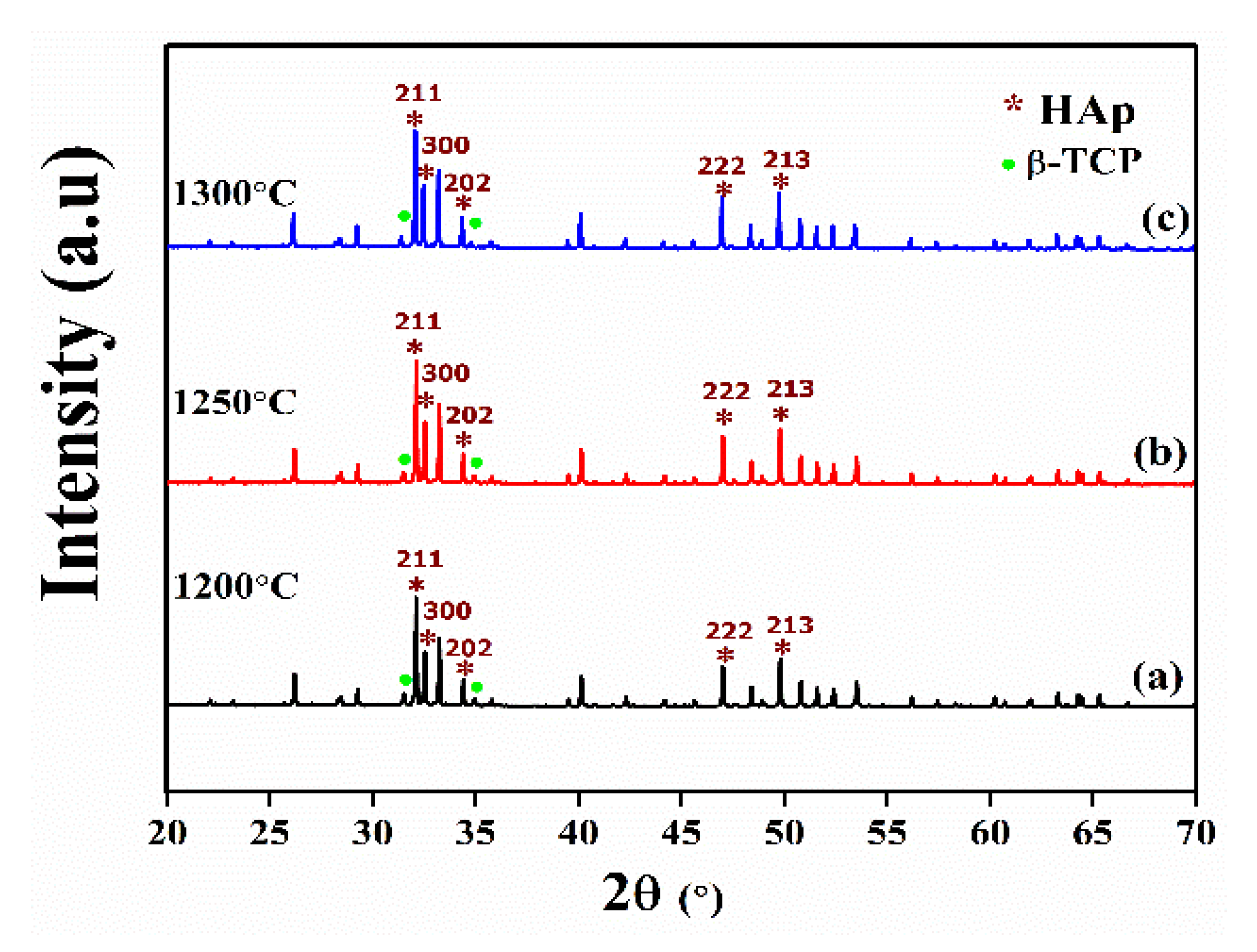

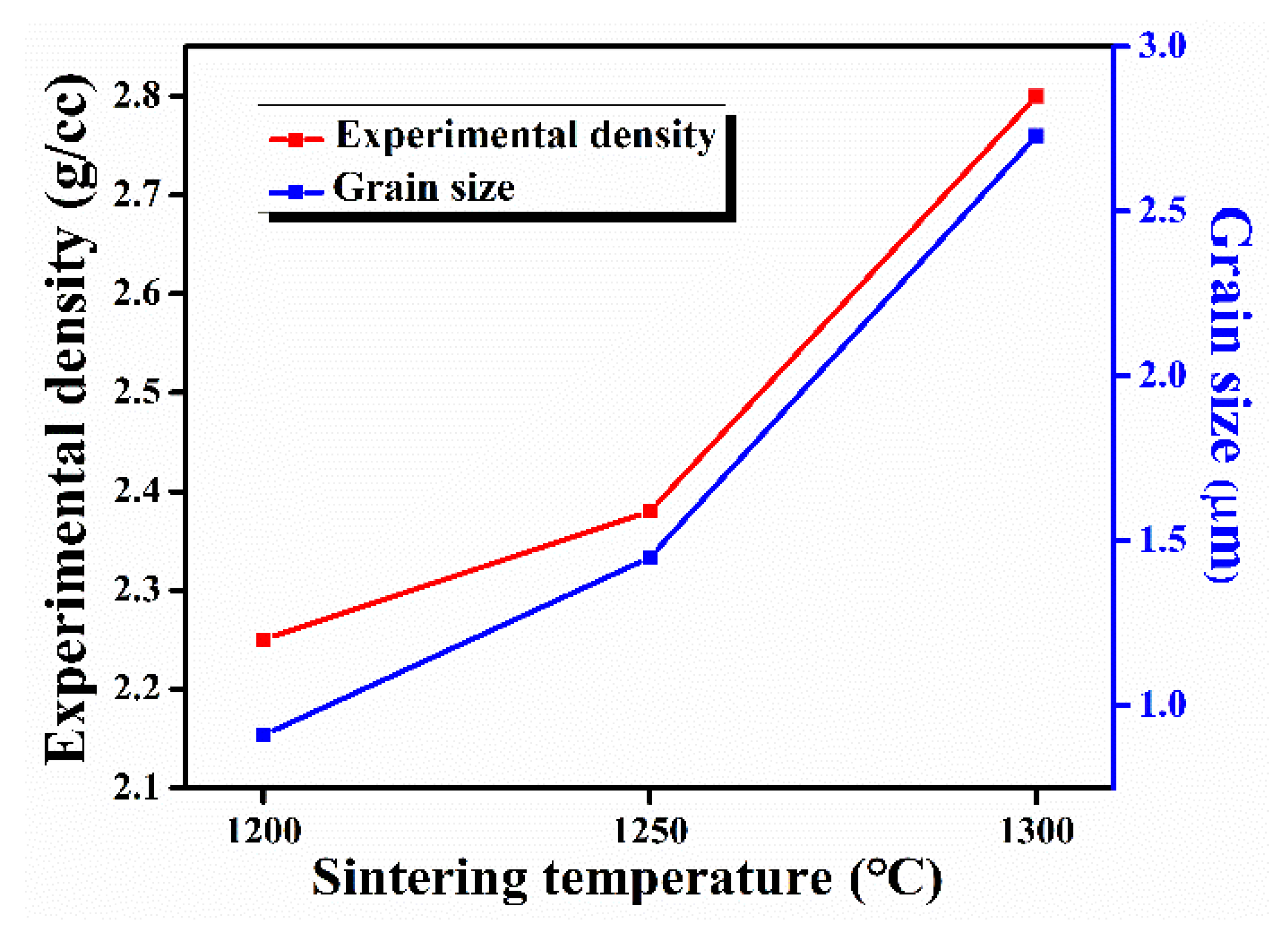
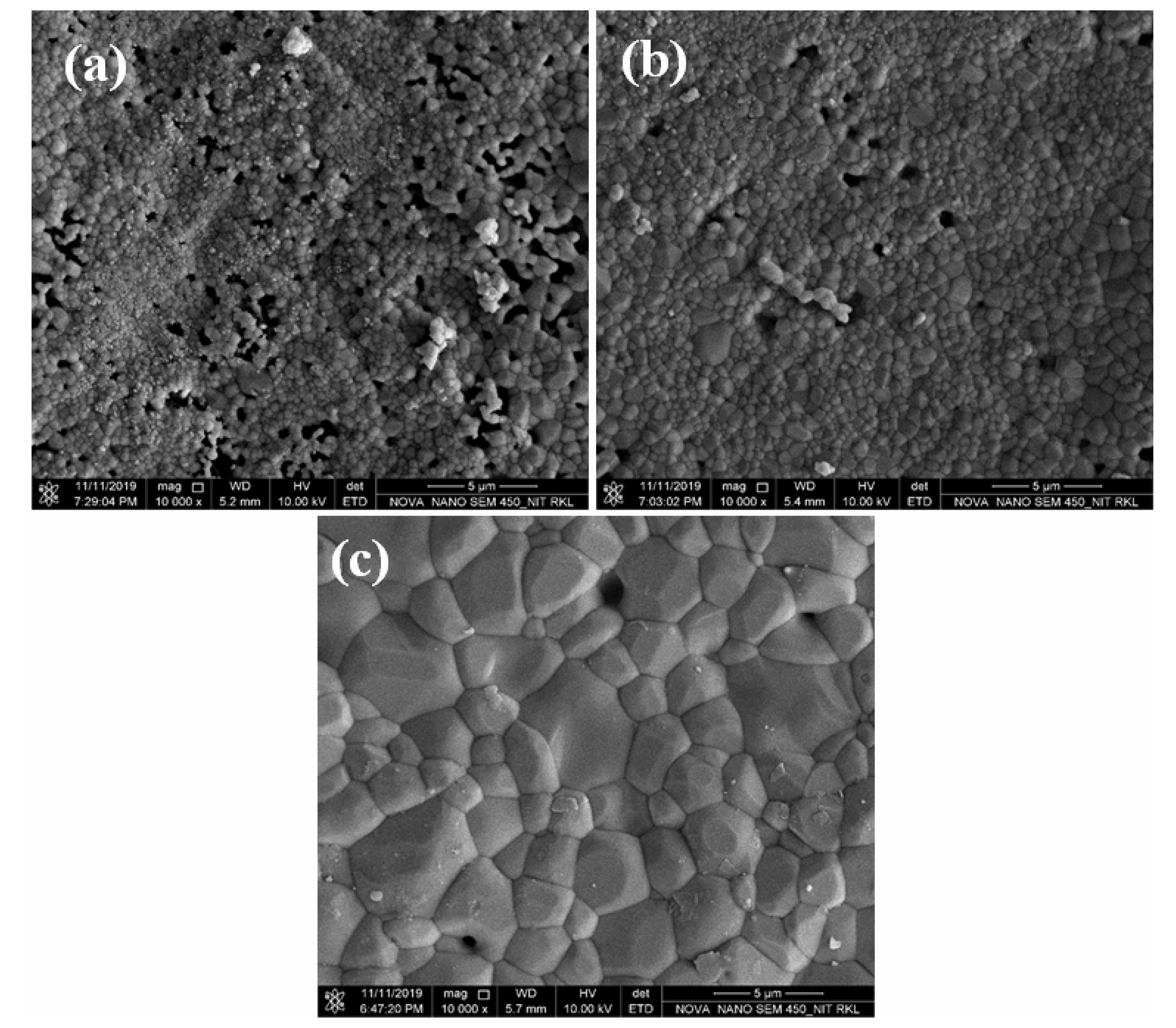

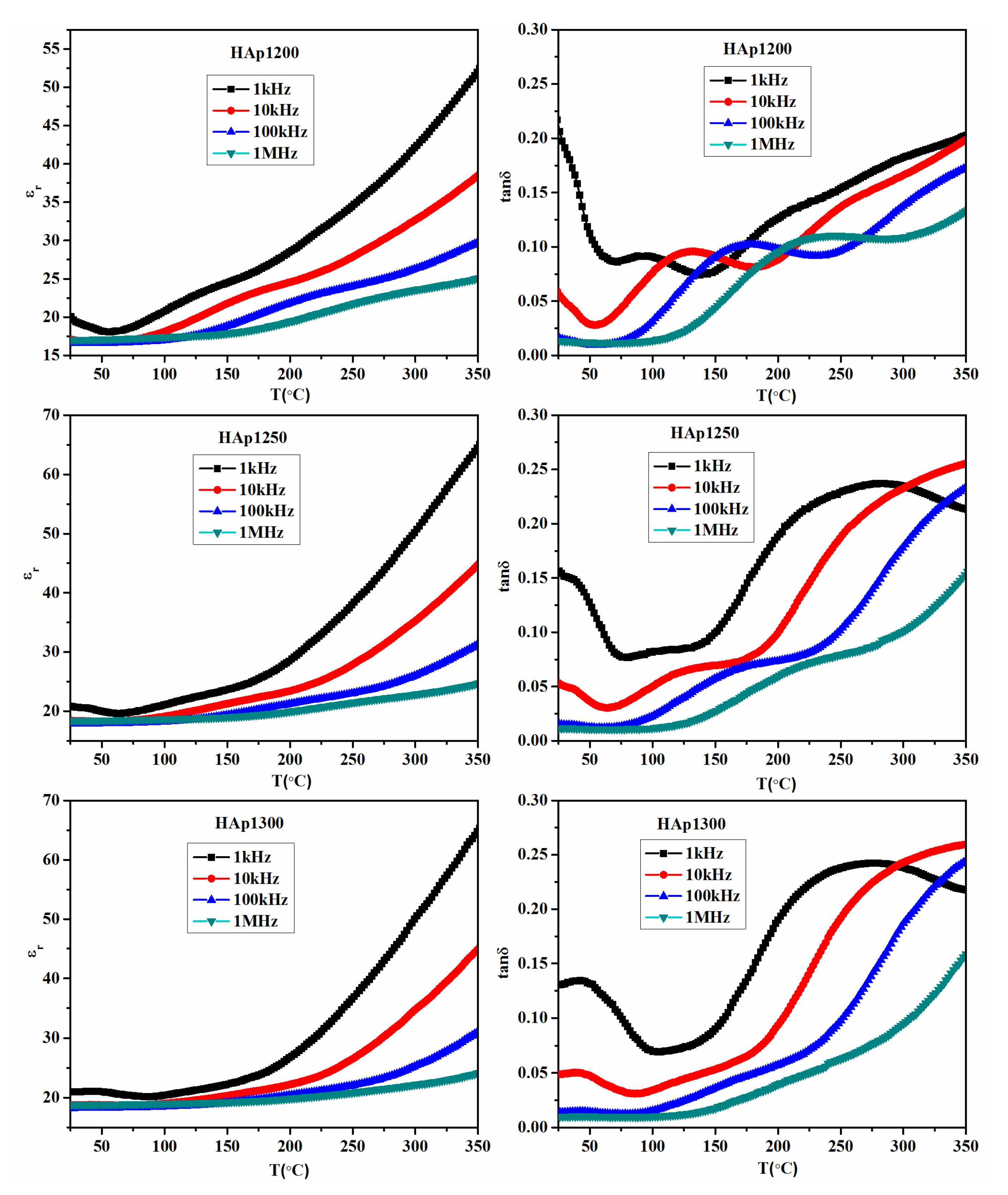
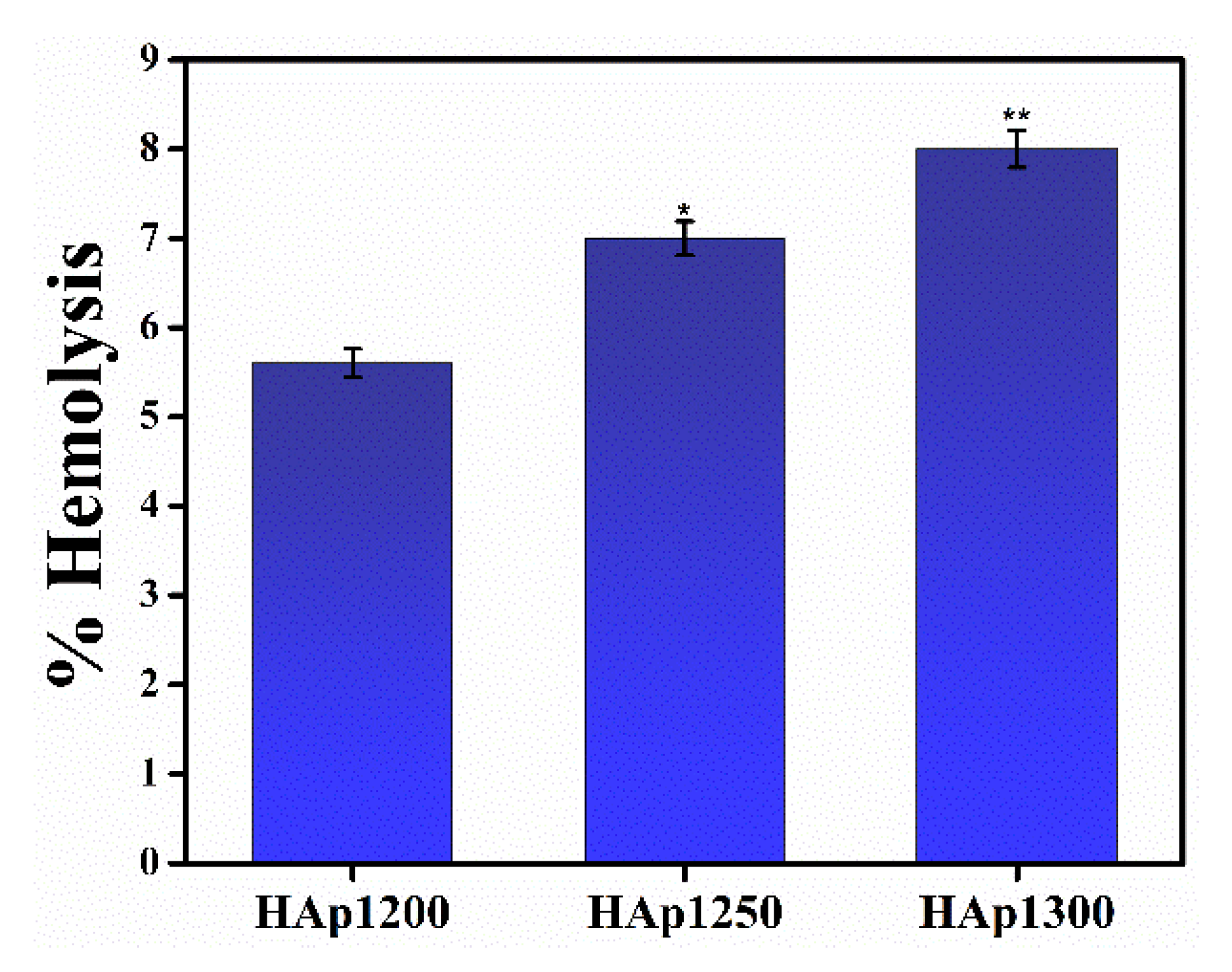
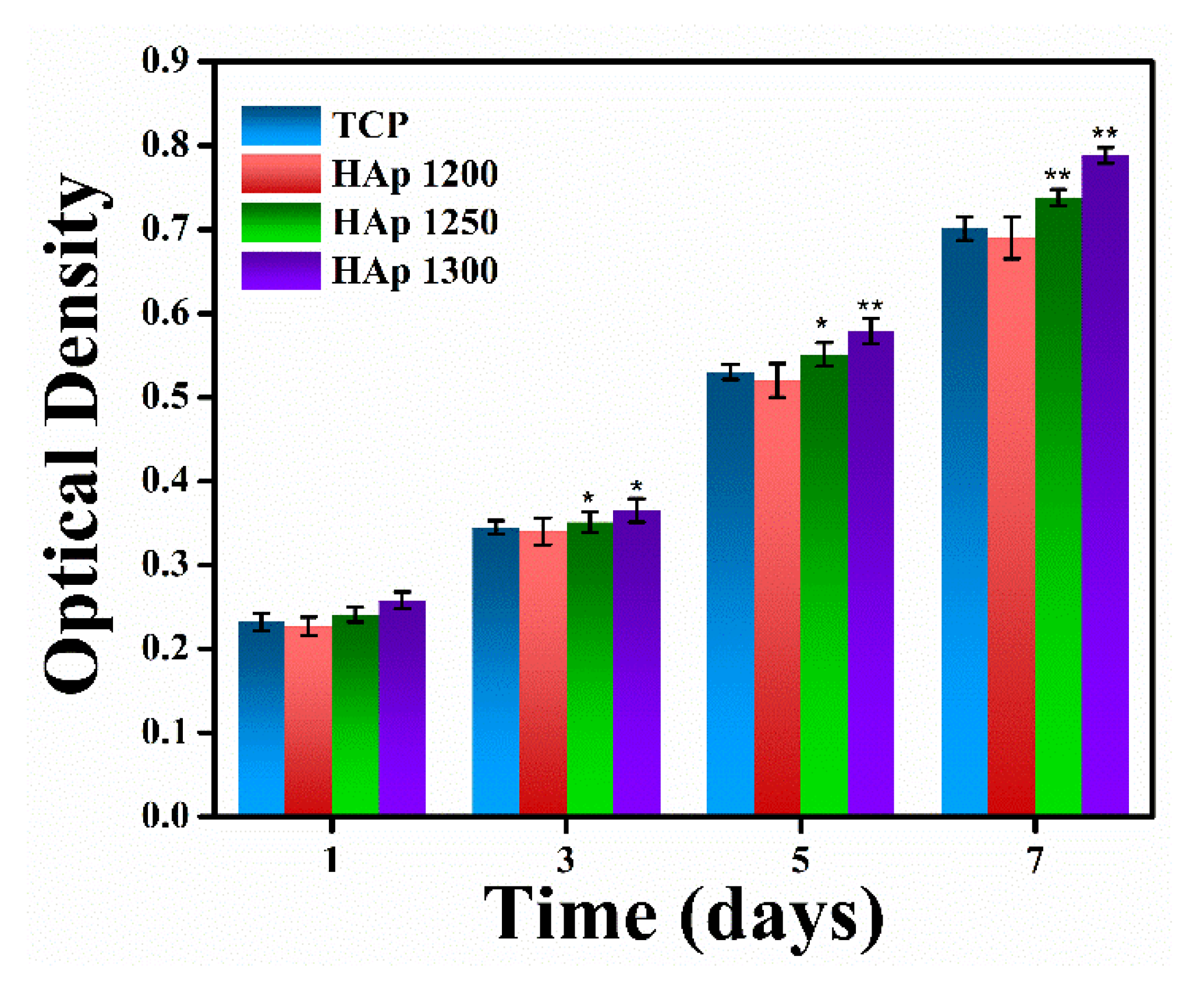

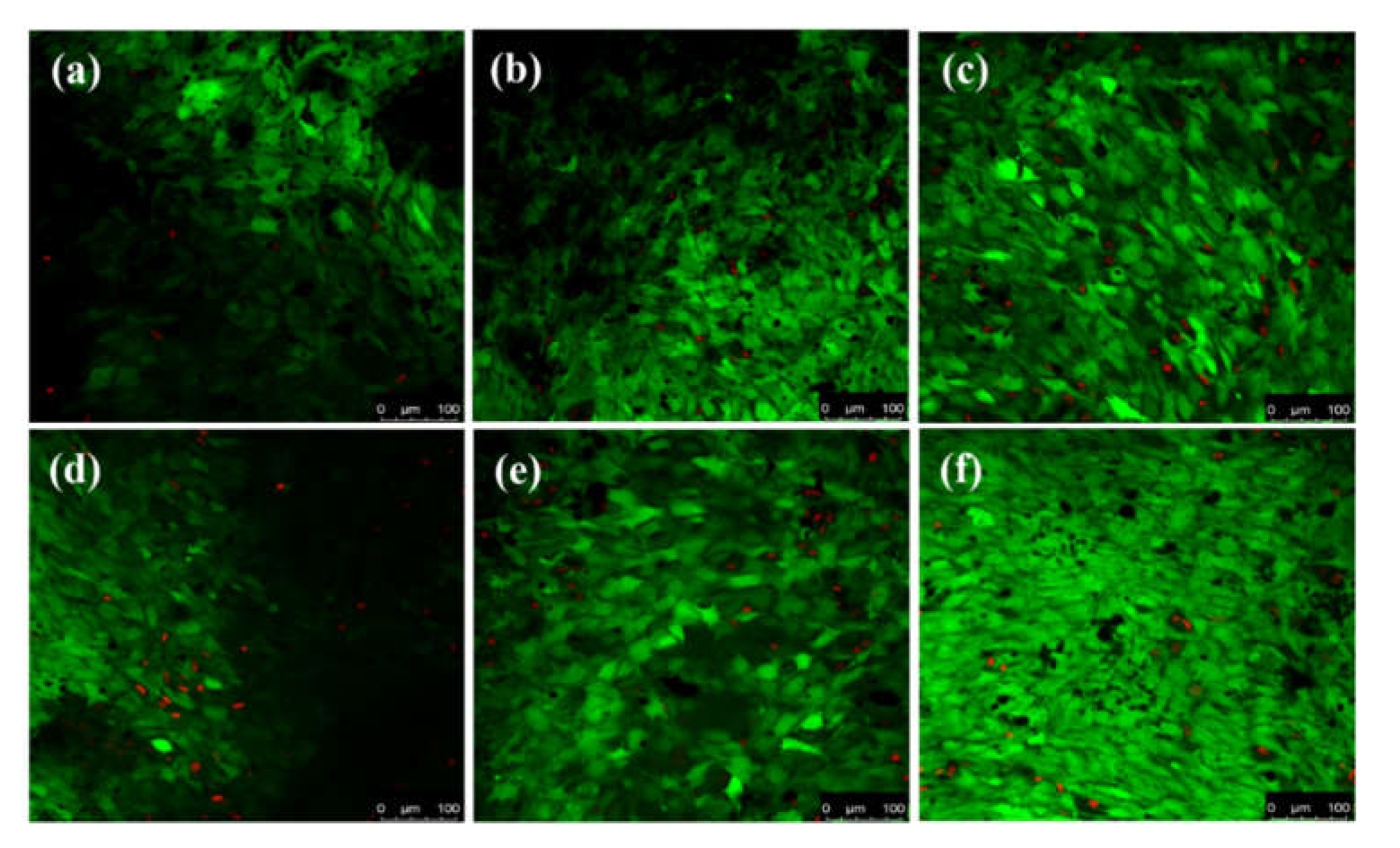
| HAp Sintering Temperature (°C) | Diameter Tensile Strength (MPa) | Hardness (MPa) | Fracture Toughness (MPa.m1/2) | Yield Strength (MPa) |
|---|---|---|---|---|
| 1200 | 10.21 ± 3.5 | 2075 ± 30.12 | 1.68 ± 0.08 | 691.66 ± 10.04 |
| 1250 | 14.42 ± 2.6 | 2654 ± 18.43 | 2.12 ± 0.05 | 884.66 ± 6.14 |
| 1300 | 8.82 ± 3.2 | 2356 ± 25.39 | 1.95 ± 0.03 | 785.33 ± 8.46 |
Publisher’s Note: MDPI stays neutral with regard to jurisdictional claims in published maps and institutional affiliations. |
© 2021 by the authors. Licensee MDPI, Basel, Switzerland. This article is an open access article distributed under the terms and conditions of the Creative Commons Attribution (CC BY) license (https://creativecommons.org/licenses/by/4.0/).
Share and Cite
Swain, S.; Bhaskar, R.; Gupta, M.K.; Sharma, S.; Dasgupta, S.; Kumar, A.; Kumar, P. Mechanical, Electrical, and Biological Properties of Mechanochemically Processed Hydroxyapatite Ceramics. Nanomaterials 2021, 11, 2216. https://doi.org/10.3390/nano11092216
Swain S, Bhaskar R, Gupta MK, Sharma S, Dasgupta S, Kumar A, Kumar P. Mechanical, Electrical, and Biological Properties of Mechanochemically Processed Hydroxyapatite Ceramics. Nanomaterials. 2021; 11(9):2216. https://doi.org/10.3390/nano11092216
Chicago/Turabian StyleSwain, Sujata, Rakesh Bhaskar, Mukesh Kumar Gupta, Sonia Sharma, Sudip Dasgupta, Anuj Kumar, and Pawan Kumar. 2021. "Mechanical, Electrical, and Biological Properties of Mechanochemically Processed Hydroxyapatite Ceramics" Nanomaterials 11, no. 9: 2216. https://doi.org/10.3390/nano11092216
APA StyleSwain, S., Bhaskar, R., Gupta, M. K., Sharma, S., Dasgupta, S., Kumar, A., & Kumar, P. (2021). Mechanical, Electrical, and Biological Properties of Mechanochemically Processed Hydroxyapatite Ceramics. Nanomaterials, 11(9), 2216. https://doi.org/10.3390/nano11092216








